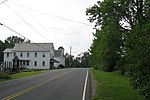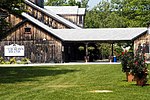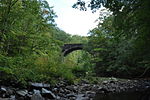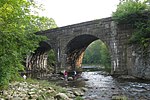Becket, Massachusetts
1765 establishments in the Province of Massachusetts BayBecket, MassachusettsPopulated places established in 1765Towns in Berkshire County, MassachusettsTowns in Massachusetts ... and 1 more
Use mdy dates from March 2012

Becket is a town in Berkshire County, Massachusetts, United States. It is part of the Pittsfield, Massachusetts Metropolitan Statistical Area. The population was 1,931 at the 2020 census.
Excerpt from the Wikipedia article Becket, Massachusetts (License: CC BY-SA 3.0, Authors, Images).Becket, Massachusetts
Main Street,
Geographical coordinates (GPS) Address Nearby Places Show on map
Geographical coordinates (GPS)
| Latitude | Longitude |
|---|---|
| N 42.331944444444 ° | E -73.083333333333 ° |
Address
Becket Washington School
Main Street
Massachusetts, United States
Open on Google Maps











